- Abstract
- Agriculture, forestry, fisheries, local currency
- Agriculture, forestry, fisheries, local currency (countries around the world)
- Agriculture, forestry, fisheries, local currency (countries around the world, latest year)
- Agriculture, forestry and fisheries, local currency (region, latest year)
- Reference
Abstract
The added value of agricultural, forestry and fisheries production plays an important role in the global economy. Data for 2023 shows Iran having the highest production value with 18.9plcu. This reflects Iran’s abundant natural resources and agricultural potential. On the other hand, other countries also rely on agriculture and forestry for their economies, and have their own unique characteristics that reflect their local climate and land use. Agriculture is positioned as a core industry in many countries and forms the foundation of local economies. Fishing is also an important industry in coastal countries, providing food and employment. Statistics in local currency are useful indicators for understanding each country’s economic situation and the value of its resources. The growth and change in these industries also influences regional and international economic policy decisions.
Agriculture, forestry, fisheries, local currency
The added value of agricultural, forestry and fisheries production has played an important role in the global economy for many years. Looking at data from 1960 to 2023, agriculture and forestry form the basis of the economy in many countries and remain major industries, especially in developing countries. Fisheries are also important in coastal countries, and there is a demand for sustainable use of marine resources. Iran’s 18.9plcu in 2023 indicates the importance of agriculture and forestry in the country. This suggests that Iran has abundant agricultural resources and is using them to support its economic growth. Furthermore, past trends show that the added value of each country’s agriculture, forestry, and fisheries is greatly influenced by the local climate and land use, which is directly linked to competitiveness in the international market. On the other hand, agricultural modernization and technological innovation have led to improved agricultural productivity and increased added value in some countries. However, from the perspective of environmental protection and sustainable development, sustainability of agriculture and forestry is being given increasing importance. Looking to the future, these industries will remain vital to the region’s economic growth and social stability.
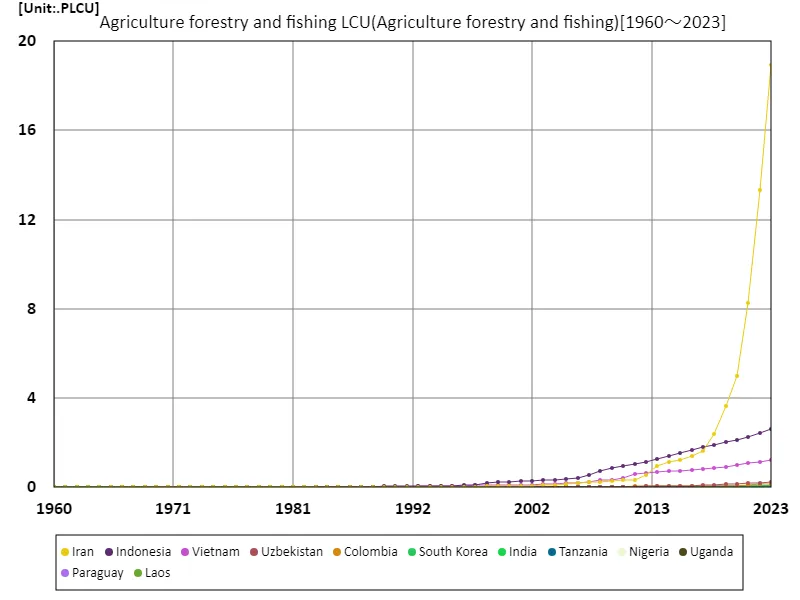

The maximum is the latest one, 18.9PLCU of Iran
Agriculture, forestry, fisheries, local currency (countries around the world)
The added value of agricultural, forestry and fisheries production has increased in importance in countries around the world between 1960 and 2023. Particularly in developing countries, these industries are key pillars of the economy, providing jobs and contributing to food security. Agriculture is particularly important in populous countries, as it contributes to a stable food supply. Iran’s record of 18.9plcu in 2023 shows that the country has rich agricultural resources, which are an important factor in its economic growth. However, data from the past few decades shows that the added value of agriculture, forestry and fisheries in each country has fluctuated greatly. While technological innovation and agricultural modernization are improving productivity and increasing added value in some countries, productivity is declining in others due to environmental issues and the effects of climate change. Additionally, measuring in local currency is an important means of accurately understanding each country’s economic strength and the value of its resources. It is also taken into account that fluctuations in currency value have a direct impact on agricultural, forestry and fishery revenues. As the sustainable development of agriculture and forestry is required for the future, a key issue will be how these industries can contribute to the stability and growth of the local economy.
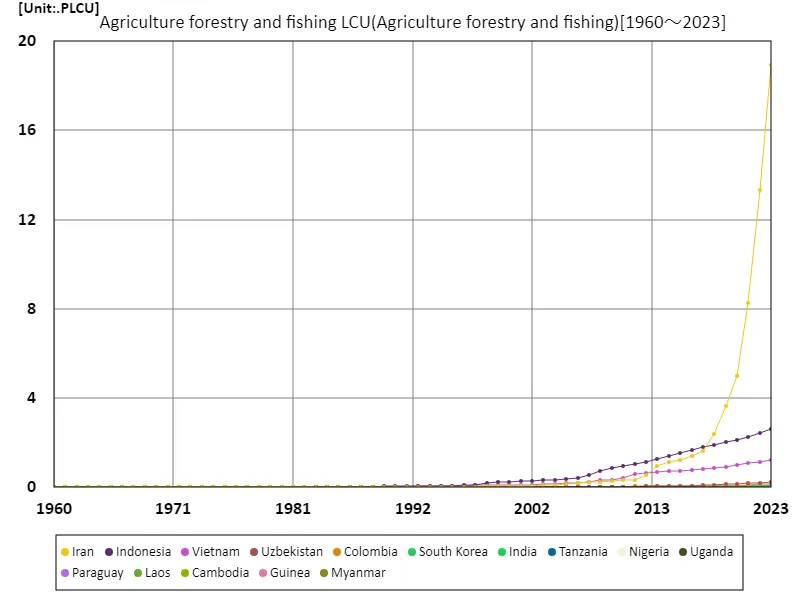

The maximum is the latest one, 18.9PLCU of Iran
Agriculture, forestry, fisheries, local currency (countries around the world, latest year)
The contribution of agriculture, forestry and fisheries to the economy occupies an important position according to 2023 data. In particular, Iran’s high production value added of 18.9 plcu demonstrates the country’s abundant agricultural resources and strong productivity. In general, agriculture, forestry and fisheries are positioned as core industries in many countries and are important sources of income for local economies. The average figure of 157 tlcu gives an indication of the size of the global agriculture, forestry and fishing economy and reflects how widely these industries are involved in economic activity. The total figure of 23.8 plcu also shows how much resources each country devote to agriculture, forestry and fisheries, underscoring their importance. Local currency data is a valuable indicator for understanding each country’s economic situation and the real value of its resources. The stability and growth of the local economy requires careful attention, as fluctuations in currency values can affect agricultural, forestry and fishing revenues. Going forward, we will need to continue to develop sustainable agriculture, forestry and fisheries while facing the challenges of climate change and environmental protection. We need to aim to achieve both economic growth and social stability, while taking into account the impacts of these industries on local communities and ecosystems.
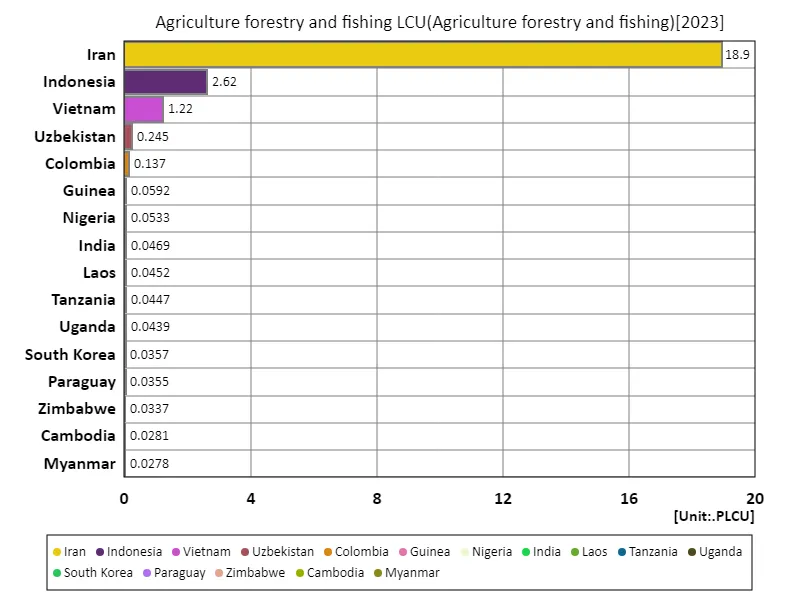

The maximum is 18.9PLCU of Iran, the average is 158TLCU, and the total is 23.8PLCU
Agriculture, forestry and fisheries, local currency (region, latest year)
The latest data for 2023 shows that agriculture, forestry and fishing play a vital role in the global economy. The Central African Republic in particular recorded a high production value added of 443 glcu, demonstrating the central role of agriculture, forestry and fishing in the country’s economy. This is due to the country’s abundant natural resources, as well as the labor and technology to utilize them. The overall average was 443 glcu, and the total was also 443 glcu, which shows that agriculture, forestry and fisheries are not evenly distributed around the world, with some countries having higher added value. This is due to differences in regional climate, land use and economic policies, and reflects differences in the levels of development and productivity of agriculture, forestry and fisheries in each country. Measurement in local currency is essential to get an accurate picture of each country’s economic strength and the actual value of its resources. Fluctuations in currency values can directly affect agricultural, forestry and fishing revenues, which can affect the stability and growth of local economies. As we look to the future, the sustainable development of agriculture, forestry, and fisheries is required, and it is important to introduce appropriate policies and technological innovations that are tailored to the characteristics and challenges of each region. It is expected that this will improve food security and promote regional economic development.
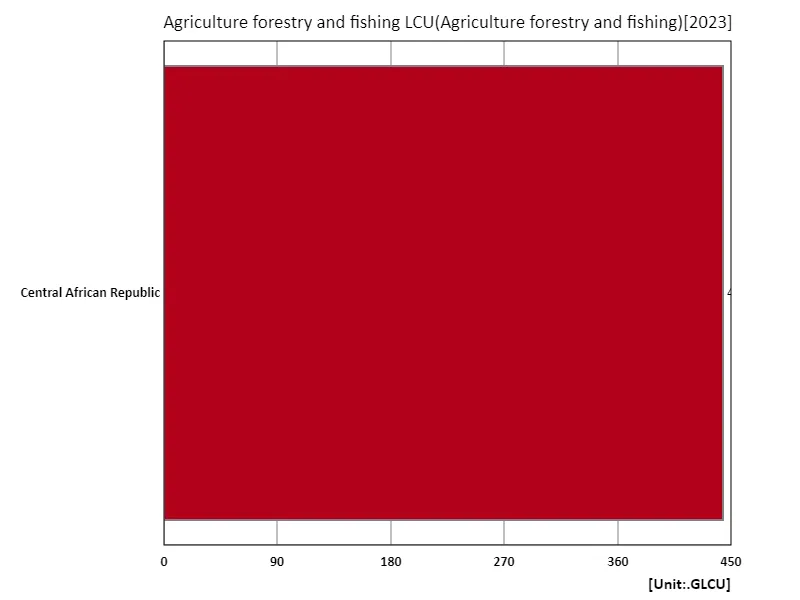

The maximum is 443GLCU of Central African Republic, the average is 443GLCU, and the total is 443GLCU
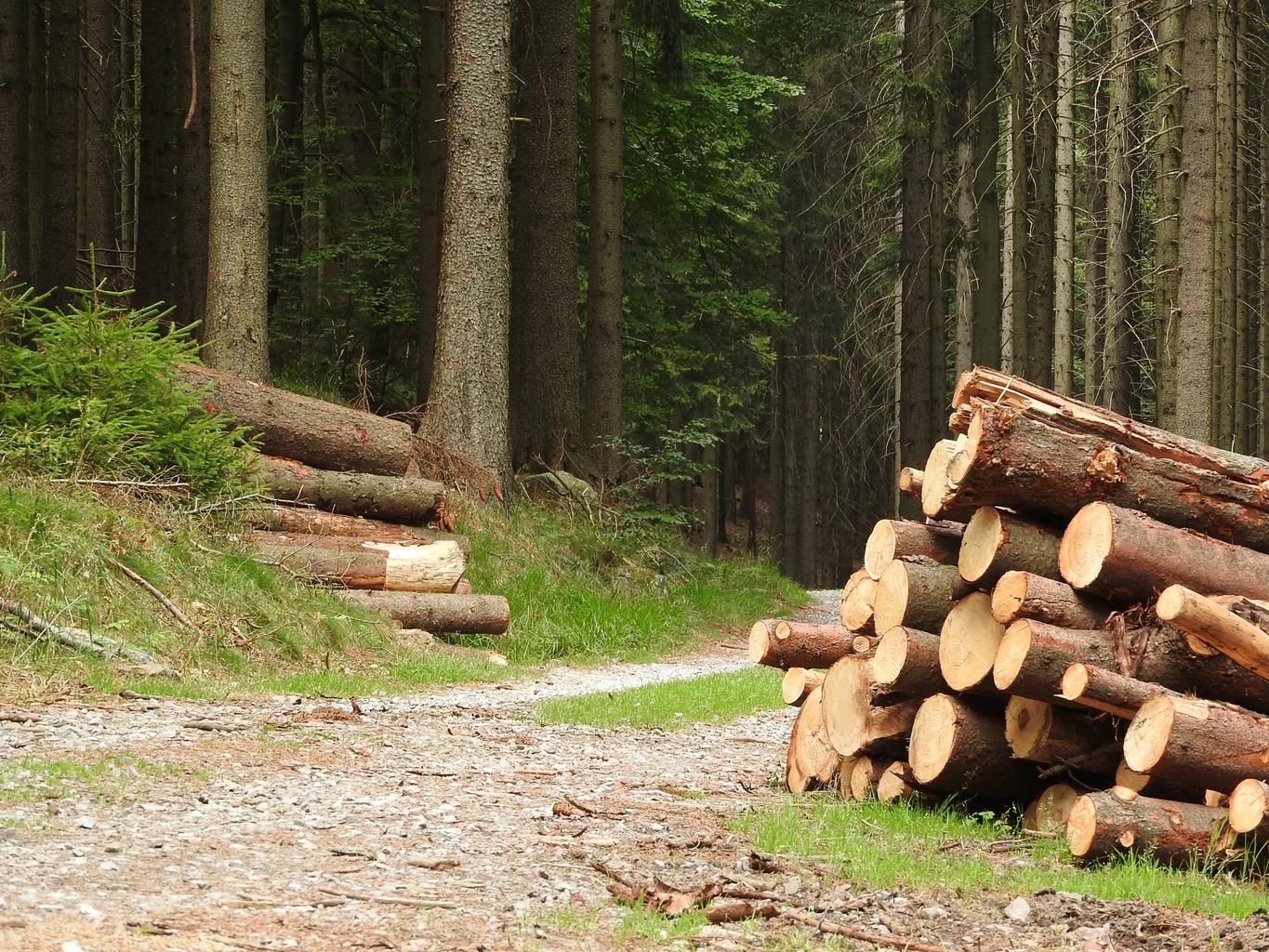


Comments